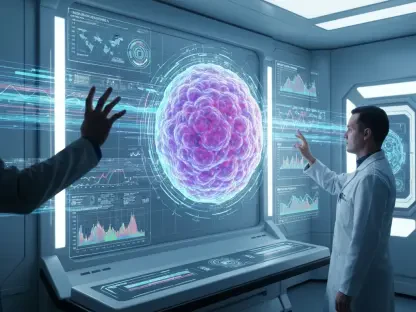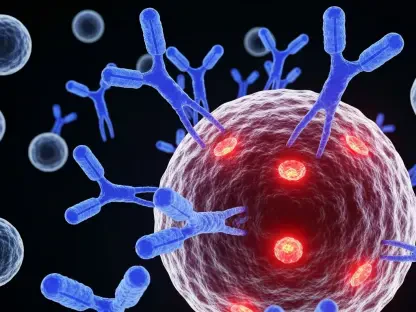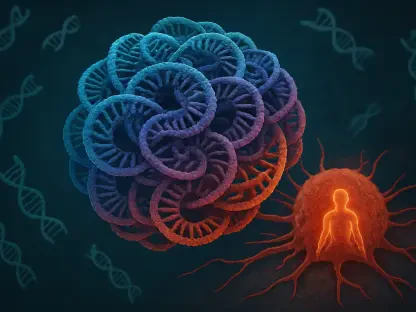Male infertility is an emotional and complex issue affecting numerous individuals and couples worldwide, posing significant medical challenges. One of the significant contributors to this challenge is non-obstructive azoospermia (NOA), a severe condition where men produce little or no sperm. Recent developments by the University of British Columbia (UBC) team of scientists present a beacon of hope. Integrating emerging technologies such as artificial intelligence (AI), 3D bioprinting, and advanced bioengineering, they have embarked on an innovative journey to tackle these challenges and provide patients with novel solutions.
Harnessing AI and 3D Bioprinting
Advanced AI Models Transforming Diagnosis
AI has become an indispensable tool across many fields, and its application in addressing NOA is no exception. UBC scientists, including Dr. Ryan Flannigan and Dr. Hongshen Ma, have utilized AI in designing sophisticated models that accurately and quickly identify rare sperm cells amidst testicular tissues. This capability significantly increases the efficiency of in vitro fertilization (IVF) treatments. By reducing the time, resources, and stress associated with current diagnostic techniques, patients have newfound hope for successful fertility treatments. The AI system’s speed and precision promise to revolutionize how infertility is addressed by not only easing the burden on medical professionals but also dramatically improving patient outcomes.
With the assistance of AI, researchers aim to overcome the barriers faced by young cancer survivors. Cancer treatments often leave survivors with irreversible infertility, posing a substantial challenge that requires rapid intervention. It is here that the integration of AI tools provides critical insights into understanding the nuances of sperm dysfunctionality. Dr. Flannigan believes the model’s continuous advancements will further the effectiveness of fertility treatments, especially for these patients. With AI’s analytical prowess, a deeper comprehension of sperm production anomalies is anticipated, potentially leading to more refined therapeutic approaches in the near future.
Cutting-Edge Bioprinting Progress
Beyond AI, another breakthrough involves the realm of bioprinting. The team has successfully adopted 3D bioprinting techniques using human-induced pluripotent stem cells to create testicular tissues. While still in the early stages, signs of sperm generation within these printed tissues are promising. This groundbreaking approach holds immense potential, making it conceivable to reconstruct organs with functional capabilities. This method is particularly important for those who have suffered medical treatments resulting in sterility, as it can offer the possibility of regenerating damaged reproductive tissues.
Developing such biologically compatible grafts could ultimately lead to personalized fertility solutions. Collaborating with experts like Dr. Govind Kaigala, researchers are harnessing this technology alongside microfluidic chips, which enable detailed simulations of cellular interactions. By replicating the environment within which sperm cells reside and mature, the intricacies of sperm production can be unraveled. This collaboration highlights the intersection of technological innovation with medical research, offering profound implications for the future of reproductive medicine and the delivery of personalized healthcare solutions.
Pioneering Research and Its Implications
Understanding Cellular Processes and Failures
The research team’s efforts extend beyond generating sperm cells; they are committed to understanding why sperm production often fails. By employing microfluidic chips, researchers are able to replicate cellular environments to closely examine sperm cell development processes. This innovative approach provides insight into the cellular dynamics that influence sperm production. Such explorations could uncover molecular-level anomalies and potentially identify interventions to correct these dysfunctions. These endeavors are essential in advancing fertility treatments, particularly in cases where conventional methods prove unsuccessful.
Simultaneously, the team is focused on personalizing therapies tailored to individual needs. NOA presents diverse challenges, requiring solutions that cater to specific conditions and symptoms. By dissecting the underlying causes of sperm production failure at a molecular level, customized treatments may emerge, improving the chances of effective intervention and patient satisfaction. This level of personalized medicine is rapidly redefining infertility treatments, offering solutions that were previously deemed unattainable. As these research initiatives advance, the potential for significant breakthroughs in understanding and treating male infertility continues to grow.
Broader Influence on Future Treatments
With pioneering research underway, the implications for both genders in the realm of infertility are extensive. The successes of such studies could inspire parallel innovations in tackling female infertility or more complex reproductive system disorders. As society grapples with diverse reproductive challenges, these scientific advancements could pave the way for holistic fertility solutions. By addressing a fundamental human need, this research transcends cultural and geographic boundaries, bringing hope to countless individuals and families.
The work being done at UBC also showcases the importance of multidisciplinary collaborations in tackling complex medical problems. Combining expertise across disciplines fosters creativity, bringing fresh perspectives that accelerate the discovery process. This collaborative model not only drives innovation today but will inspire future generations of scientists to embrace interdisciplinary approaches for solving challenging problems. The ripple effect of such pioneering research can help usher in a new era of medical breakthroughs, transforming the landscape of reproductive medicine and setting new standards for compassionate patient care.
The Future of Reproductive Medicine
Male infertility remains a deeply personal and complex issue, impacting countless individuals and couples around the globe. Among the obstacles faced, non-obstructive azoospermia (NOA) is particularly challenging. This severe condition occurs when a man’s body produces little or no sperm, making natural conception nearly impossible. The lack of treatment options adds to the frustration and emotional burden for those affected. However, new advancements from the University of British Columbia (UBC) offer a glimpse of hope for these patients. The UBC scientists are using cutting-edge technologies like artificial intelligence (AI), 3D bioprinting, and advanced bioengineering to develop innovative solutions aimed at tackling male infertility, especially NOA. By harnessing these advanced tools, they aim to pioneer new treatments that could potentially help men overcome this daunting reproductive hurdle. This approach not only signifies scientific progress but also embodies hope for a future where male infertility can be effectively addressed.









